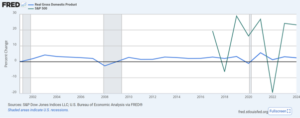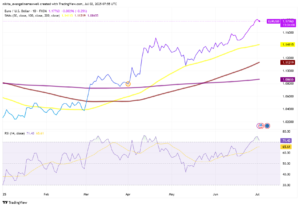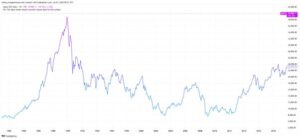Background
Recent U.S. inflation data and Federal Reserve policy discussions have taken center stage in financial markets. November’s Personal Consumption Expenditures (PCE) data showed signs of easing inflationary pressures, prompting speculation about whether these figures could influence the Fed’s policy trajectory.
The PCE index rose 2.4% year-over-year and just 0.1% month-over-month, both below expectations. Core inflation also came in slightly lower than forecast. While these results indicate some moderation in inflation, the Fed maintained a cautious tone during its December policy meeting, signaling plans for just two rate cuts in 2025—down from the previously projected four cuts.
Fed Policy and Market Reactions
Hawkish Signals from the Fed
During the December meeting, Federal Reserve Chair Jerome Powell emphasized that current inflation trends require further data confirmation. He reiterated that the Fed’s approach is “data-dependent but not data-point dependent.” While the November PCE data suggested easing inflation, Powell noted that a single month’s data is insufficient to alter the policy outlook. Consecutive months of favorable inflation data might be needed to prompt significant changes to the Fed’s dot plot.
Market Sentiment
- Stock Market Volatility: Stocks initially sold off following the Fed’s announcement of reduced rate cut expectations. However, markets later stabilized as investors began to view the easing inflation data as a positive development.
- Optimistic Perspectives: Chris Larkin, managing director at E-Trade, remarked that November’s PCE data indicated “sticky inflation appeared to be less stuck.” Similarly, Chicago Fed President Austan Goolsbee expressed optimism, suggesting that inflation might be returning to its expected downward path.
Would the PCE Data Have Altered the Fed’s Dot Plot?
Data-Dependent but Not Single-Point Dependent
Powell has consistently emphasized that policy decisions are based on long-term trends rather than individual data points. Thus, while November’s PCE data was encouraging, it is unlikely to have independently shifted the Fed’s dot plot or rate trajectory.
Possible Scenarios
Some analysts speculate that if inflation data continues to cool in the coming months, the Fed could revise its rate projections. However, such adjustments would require sustained evidence of a broader trend, not just a single positive reading.
Key Takeaways for Investors
-
Focus on Fundamentals
Investors should prioritize corporate fundamentals—earnings, cash flow, and future income—rather than attempting to time market movements based on short-term policy signals. While inflation and interest rates impact markets, fundamentals ultimately drive long-term stock performance. -
Prepare for Policy Uncertainty
With the Fed’s policy path still uncertain, relying too heavily on short-term signals could lead to increased risks. A stable, diversified investment approach is crucial in navigating this environment. -
Monitor Ongoing Data Trends
Investors should watch for additional inflation and labor market data in the coming months. If inflation continues to decline, it could increase the likelihood of a more dovish Fed stance in 2025.
Conclusion
While November’s PCE data provided a welcome sign of easing inflation, it alone was not sufficient to alter the Fed’s cautious policy stance. Future inflation readings and broader economic trends will play a decisive role in shaping the Fed’s approach.
For investors, focusing on long-term fundamentals and maintaining a diversified strategy is essential in navigating the current landscape. Understanding the interplay between data and policy will remain critical as markets adjust to ongoing uncertainties.
Key Takeaway: Despite easing inflation data, the Fed remains cautious. Investors should focus on fundamentals and monitor trends for clearer policy signals.





